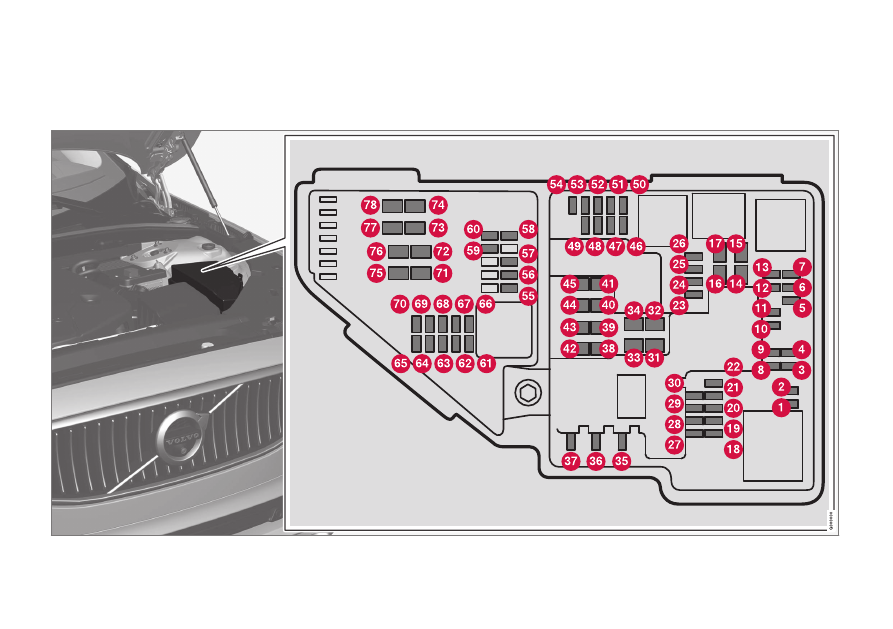Volvo V90 Twin Engine (2018 year). Manual - part 33

MAINTENANCE AND SERVICE
}}
569
Fuses in engine compartment
Fuses in the engine compartment protect engine
and brake functions, amongst other things.
|
|
|

MAINTENANCE AND SERVICE }} 569 Fuses in engine compartment Fuses in the engine compartment protect engine |